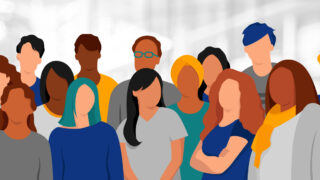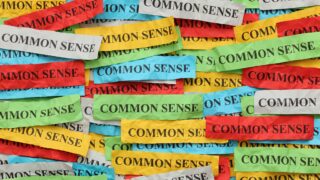If there’s one thing every company could use more of, it’s a stronger strategy for diversity, equity, and inclusion (DEI). And if there’s one thing every employee could benefit from, it’s stronger critical thinking.
Critical thinking is more than just thinking harder. It’s a way to apply logic and analysis using specific frameworks like logic trees and the Minto Pyramid Principle.
The World Economic Forum lists critical thinking among important skills needed in the twenty-first century. That’s because, with an end goal of better problem-solving and decision-making, critical thinking turns employees into lifelong learners. A lot of critical thinking is rethinking.
Wise business leaders will recognize that DEI and critical thinking aren’t mutually exclusive. In fact, they feed off each other in some significant ways.
Next Article
How to Identify and Remove Barriers to Critical Thinking
5 of the Best Books on Critical Thinking and Problem-Solving
The Lasting Benefits of DEI in the Workplace
A diverse workforce fights groupthink.
When the members of your team (especially management teams) all come from similar backgrounds, decision-making tends to go rather smoothly. Similarities make it easy to form a unified front and push new ideas out the door quickly.
That’s not always a good thing, however. For starters, it makes your team susceptible to groupthink.
Groupthink happens when we value consensus above all else. It’s a psychological trap in which those who disagree stay quiet rather than share, or only share when they know the group will approve.
Critical thinkers are, to some degree, equipped with tools to fight groupthink, but they are by no means immune. After all, sound decision-making needs as much information as possible—not just facts, but diverse perspectives.
According to the Harvard Business Review, employees at companies with diverse talent pools are 70% more likely to report that their firm captured a new market. Diversity brings new ideas, and critical thinking can help put those ideas to use in unexpected and innovative ways.
DEI with critical thinking raises psychological safety.
Companies that take diversity seriously know that performative measures (like token people of color in leadership positions) aren’t enough. DEI should be a part of team management, business strategy, and corporate governance.
When diversity in the workplace is ubiquitous, it raises psychological safety, which in turn leads to higher levels of employee satisfaction.
As with groupthink, diverse employees who feel a lack of psychological safety will hold their tongues, no matter how valid their points might be. Why raise your voice if you’ll be ignored, or even gaslighted?
Critical thinking training can be a meaningful first step toward creating an environment of psychological safety. When your people are trained as critical thinkers, they’re open to having their opinions challenged. In fact, they seek it out.
Next Article
How to Avoid Management Bias in the Workplace
How to Keep “Common Sense” from Ruining Diversity of Thought
Critical thinking is a natural bias repellant.
“Diversity” as a term tends to conjure images of different genders, races, or cultures—things we can see. But many kinds of diversity are invisible, including socioeconomic backgrounds, life experiences, sexual orientations, and neurodiversity.
Unsurprisingly, it’s easy for a diverse team to stumble as they get used to each other. An often-overlooked benefit of critical thinking is that it can help smooth this transition.
Critical thinking skills cancel out bias and empower people to keep their eyes on the prize: the problem you’re trying to solve. The team learns to welcome diversity of thought as a toolkit expansion, rather than a barrier.
As an added bonus, new members will find it easier to integrate. Onboarding is often clunky as new members get used to how decisions are made. Critical thinking can demystify the process.
The benefits of critical thinking support DEI for better business.
Just as DEI should be part of your business strategy, critical thinking should be an integral part of your company culture. It can help teams avoid problems like groupthink, raise psychological safety, and overcome inclusion barriers. And it helps individual employees grow.
All of these will accelerate the benefits of diversity for your business.
Diversity can be an overwhelming undertaking. Many companies don’t know where to start, or how to overcome a reliance on tokenism. But if you apply diverse perspectives to decisions through the lens of critical thinking, you’ll find your workforce can find solutions to a wide range of problems.








